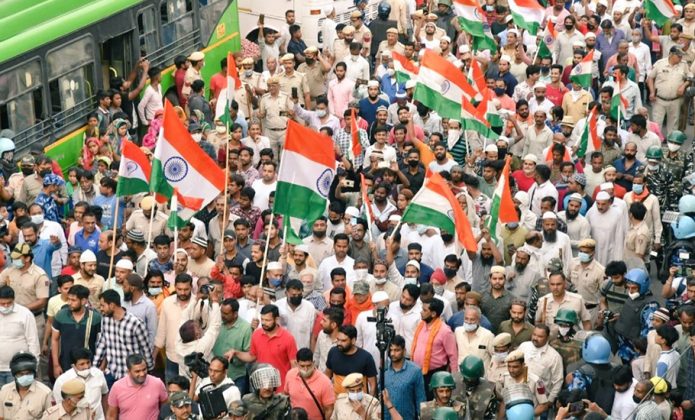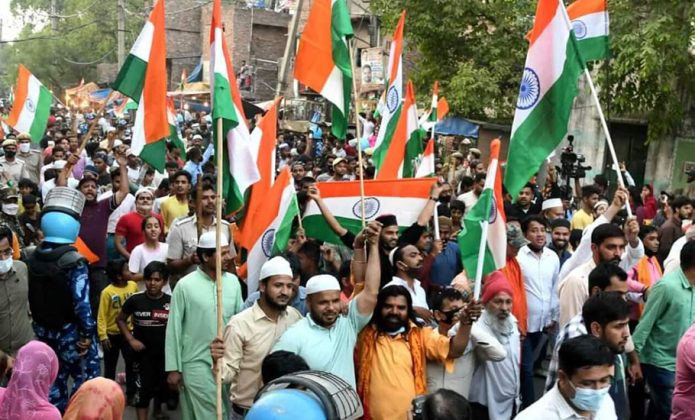
- Home
- India
- World
- Premium
- THE FEDERAL SPECIAL
- Analysis
- States
- Perspective
- Videos
- Sports
- Education
- Entertainment
- Elections
- Features
- Health
- Business
- Series
- Bishnoi's Men
- NEET TANGLE
- Economy Series
- Earth Day
- Kashmir’s Frozen Turbulence
- India@75
- The legend of Ramjanmabhoomi
- Liberalisation@30
- How to tame a dragon
- Celebrating biodiversity
- Farm Matters
- 50 days of solitude
- Bringing Migrants Home
- Budget 2020
- Jharkhand Votes
- The Federal Investigates
- The Federal Impact
- Vanishing Sand
- Gandhi @ 150
- Andhra Today
- Field report
- Operation Gulmarg
- Pandemic @1 Mn in India
- The Federal Year-End
- The Zero Year
- Science
- Brand studio
- Newsletter
- Elections 2024
- Events
- Home
- IndiaIndia
- World
- Analysis
- StatesStates
- PerspectivePerspective
- VideosVideos
- Sports
- Education
- Entertainment
- ElectionsElections
- Features
- Health
- BusinessBusiness
- Premium
- Loading...
Premium - Events
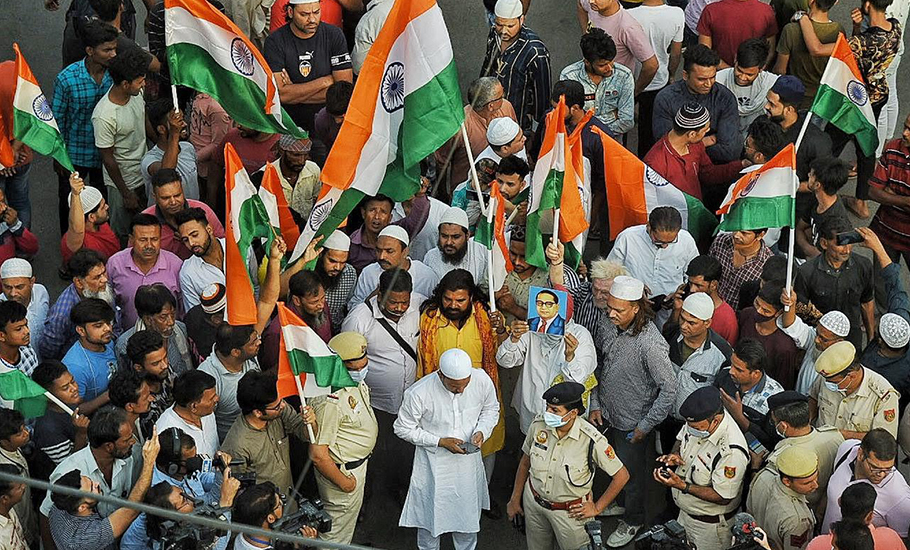
Jahangirpuri tries to rebuild bulldozed trust

Pawan Kumar and Rizabul Ahmed, both in their late 50s, have weathered many a storm together in their friendship that has lasted nearly three decades. But this time around, the cracks on the walls seem to have grown bigger, more visible. Still not ready to give up on his best friend, Pawan, a fruit seller from Delhi’s Jahangirpuri, is visibly perturbed. “He has been my friend since...
Pawan Kumar and Rizabul Ahmed, both in their late 50s, have weathered many a storm together in their friendship that has lasted nearly three decades. But this time around, the cracks on the walls seem to have grown bigger, more visible. Still not ready to give up on his best friend, Pawan, a fruit seller from Delhi’s Jahangirpuri, is visibly perturbed. “He has been my friend since I came here more than 30 years ago. Our bond is stronger than that of real brothers.”
Days after bulldozers rolled into Jahangirpuri and razed several structures mostly belonging to Muslims, including the gate of a mosque, tension is quite palpable in the area even as the Supreme Court has stayed the demolition drive for two weeks now.
The demolition drive followed clashes that had broken out between Hindus and Muslims during a Hanuman Jayanti procession on April 16, leaving eight police personnel and a local resident injured. On April 20, the Municipal Corporation of Delhi (MCD), led by the BJP, carried out an ‘anti-encroachment drive’ in the neighbourhood. The drive saw the demolition of a portion of a mosque in the area along with houses even as a temple allegedly standing on ‘encroached’ land was left unharmed. The fact that the drive went on for hours even after a Supreme Court order asking authorities to stop the demolitions led to allegations of ‘vendetta politics’ against Muslims.
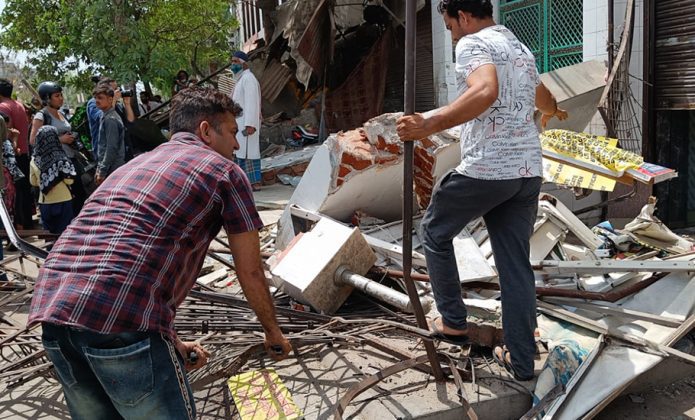
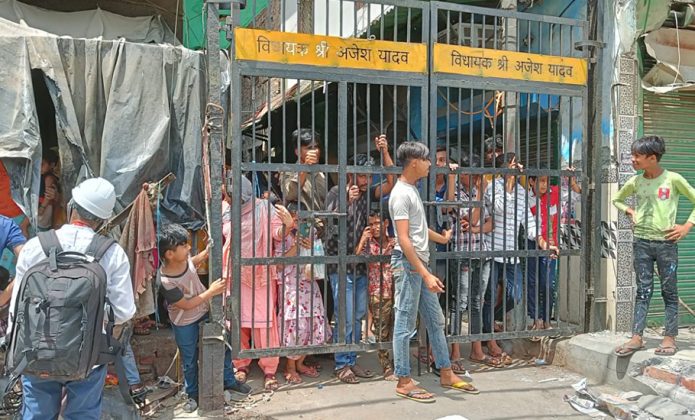
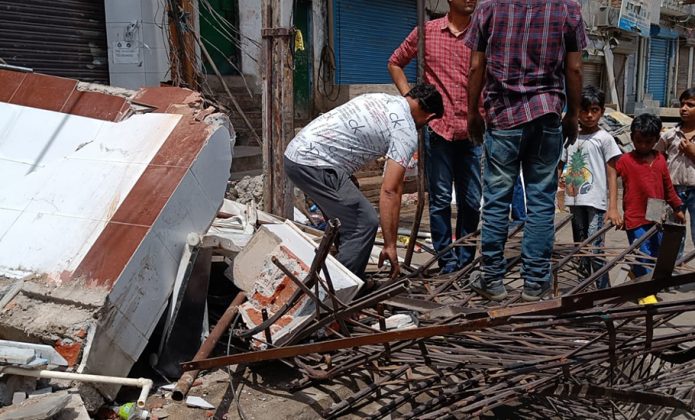
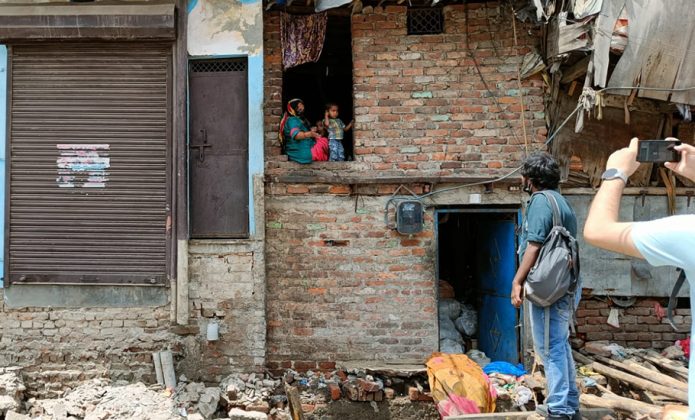
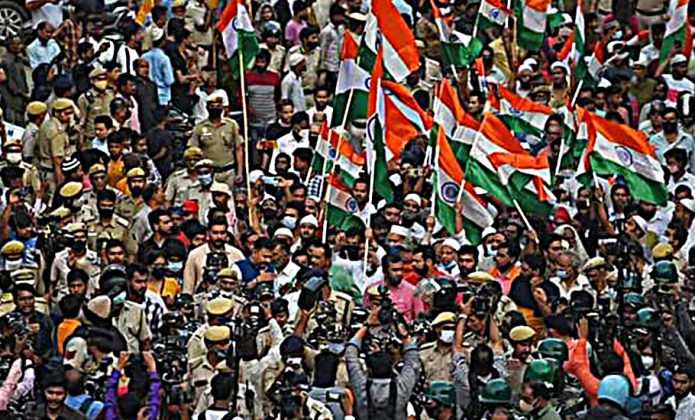
For now, the dust seems to be settling over the pulled down structures, but the debris of the broken bond between Hindus and Muslims lie scattered all over the place – an awkward silence hanging in the air as friends, neighbours and acquaintances try to get back on their feet.
In an attempt to restore semblance, a group of around 100 men on Sunday walked for about a kilometre in and around the C Block area of Jahangirpuri as part of a tiranga yatra (tricolour rally). The tricolour held aloft, slogans of ‘Hindu, Muslim Sikh, Isai, Aapas Mein Hai Bhai-Bhai’, ‘Vande Mataram’, ‘Bharat Mata ki Jai’ could be heard loud and clear – a customary march that follows most communal riots and clashes in India to prove that the bonds of love and friendship haven’t broken irreparably and that the violence was just an aberration in an otherwise peaceful atmosphere. The presence of Delhi Police officers in numbers larger than the participants of the yatra, however, showed that even if the bond hasn’t been smashed completely, it certainly hangs precariously in this Delhi locality.
Some residents, however, exhibit a defiant audacity of hope drawing from the experiences of the past in a present where communal slogans, clashes, speeches and attacks are fast becoming a norm.
“After living peacefully for decades in the area, we found the last few weeks to be extremely tense. Members of both the communities were shying away from visiting each other’s homes. Kya muh leke jaate (How could we face each other)? We failed each other as a community. But today, we decided to remove those barriers and hold the Tiranga Yatra,” says Indra Tiwari, president of the Residents’ Welfare Association of Jahangirpuri.
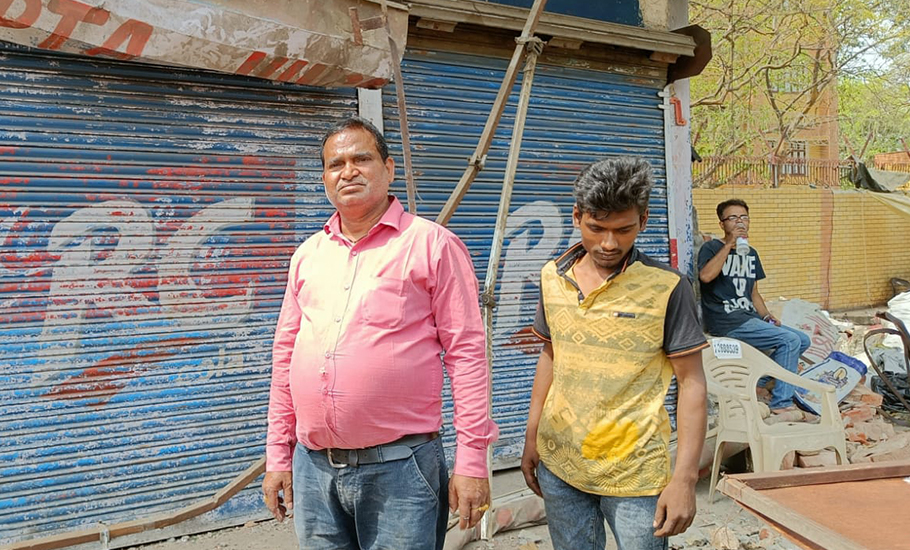
“Muslims chanting ‘Jai Shri Ram’ and Hindus crying aloud ‘Allah hu Akbar’, have you seen this anywhere?” asks Tarannum, a 34-year-old biryani seller participating in the yatra. Tarannum believes everything is fine between Hindus and Muslims in the area. “The yatra is proof of that,” she adds.
As participants of the yatra raised slogans of ‘Bharat Mata Ki Jai’, many others lined up the streets of C Block, the epicentre of the clashes. There were also those who stood at their windows and in their balconies to watch and shower flower petals to show solidarity and support even as they waved the Indian flag.
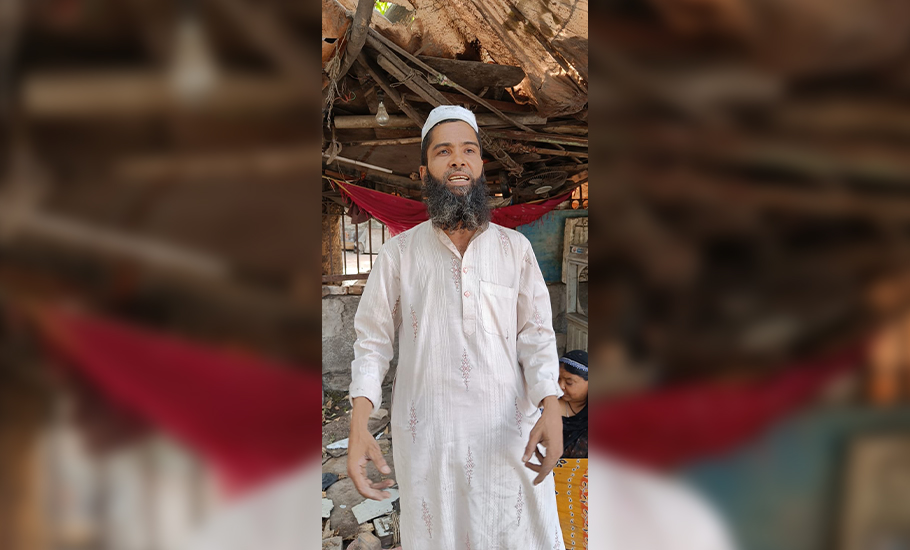
People living in Jahangirpuri’s C and D blocks witnessed enough violence and tension over nearly two weeks to deepen the enmity between the two groups. About a fortnight later, police and security forces continue to guard the area with a heavy enough deployment to make it look like an army cantonment. Security personnel could be seen standing guard on every street. They ensure no one is allowed access to areas where the bulldozers razed the alleged illegal encroachments. Even the media is denied access to the area.
Meanwhile, both Hindus and Muslims accept that while their decades-old bond is intact, there is a palpable unease in the area between members of the two communities.
“I have been living in this area for four decades. There was no communal tension at all. All my neighbours are Muslims. In fact, we used to celebrate all the festivals together and distribute sweets and hug each other on important moments,” says 60-year-old Dharam Pal, who owns a bakery in C Block.
“I don’t know if we can celebrate Eid, Holi or Diwali together again in the same manner. The incident broke my heart. I don’t know who came and did all this, but our brotherhood is in shambles now,” Pal said, adding that Muslims stood by him whenever he was in need of help.
Forty-eight-year-old auto driver Aslam concurs with Pal. Aslam, however, feels these trying times will help the two communities come out stronger together. “We want to live in peace and harmony in the area. Whoever did this, their aim was to disturb the peace. They wanted Hindus and Muslims in the area to fight with each other.”
Aslam believes the only way to foil the nefarious plans of those trying to disturb the peace in Jahangirpuri is communal harmony.
“We will not let people fight people. Our answer is not violence against violence. Our answer will be peace. This will break the morale of those trying to spread violence. Our relations with Hindus were good and will always be good. We will stay with them here only and won’t let them go as well. There was mistrust, but now we are clearing the air.”
Rizabul’s best friend Pawan Kumar agrees with Aslam. The relations between the two communities have always been good. “Most of my customers are Muslims. There is no such thing as hatred between Hindus and Muslims here.”
Kumar says he has been staying in the area not because of any compulsion but because of the relations he has built over the years in Jahangirpuri.
“I could have shifted from here. I had that opportunity. But my relations with the people here are so good I don’t think I can leave the area. If anything happens to me, I am sure people will come forward to help.
But he admits the situation is tense and more than uncomfortable. “Media reports of Hindus attacking Muslims and all the stuff about violence is making me jittery.”
“Whenever I hear such news, I distance myself from them [Muslims] and stop going to their houses. What would I say if they ask me something? They don’t, but I can see it in their eyes. They want some kind of an answer. This happens after every time a communal clash takes place anywhere else in the city. After the northeast Delhi riots in 2020, I still remember I could not meet Rizabul and others for days,” he adds.
Rizabul, a stationery shopkeeper, understands his friend’s discomfort and pain. “The same happens with me as well. It is very difficult to maintain that balance. After all, religion does test us sometimes. We can try to stay neutral but the way things are these days, it is not easy. It is a very trying time for Hindu-Muslim brotherhood and friendship.”
“No matter what, we should not let this happen. We should save Hindu-Muslim brotherhood at any cost. This is the beauty of India. I will never let anything happen to Pawan and my friendship. Whenever Pawan does not come to me or call me for a week, I know he is overthinking and I visit him,” Rizabul adds.
“The [Hindu and Muslim] residents of the area didn’t fight among themselves. We don’t even know the people who came and indulged in violence,” Rizabul says.
Many like Rizabul say they have never indulged in violence against each other because they have a shared relation — that of poverty.
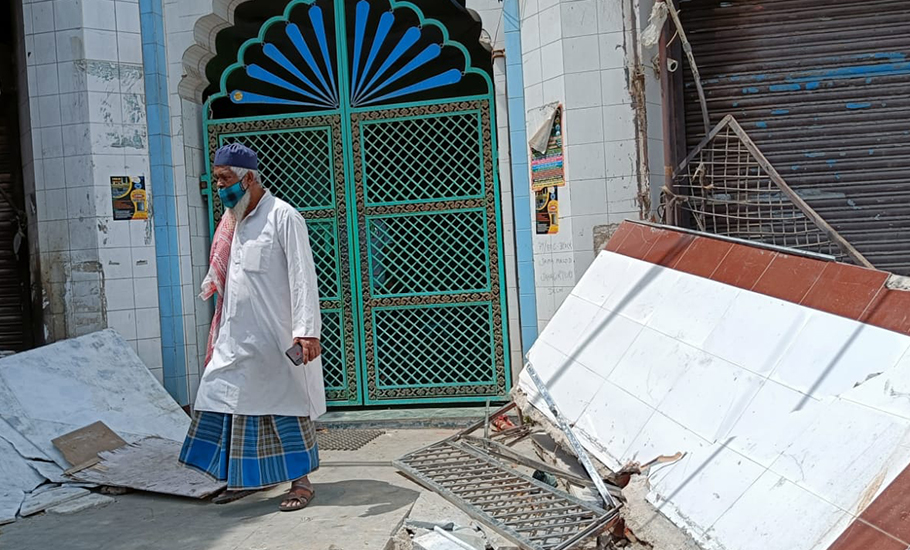
“Apart from Hindus and Muslims, there is one more religion in this country which is poverty. It is being shown on TV that there is an atmosphere of hatred between Hindus and Muslims in Jahangirpuri, but the situation here is completely different. Whoever is living here is poor. Hindus are also poor and so are the Muslims,” says Roshni Devi, a 38-year-old homemaker.”
“It is poverty that unites us. Some are street vendors, some are daily wage labourers, and some run rickshaw carts. If we fight amongst ourselves in the name of religion, what will we earn and what will remain. The fight that took place was not because of the people of Jahangirpuri but because of the people of other localities,” Roshni tells The Federal.
Despite the promises of restoring peace and brotherhood, suspicion and mistrust hangs in the air. Some say the atmosphere has vitiated over the past two-three years.
Sixty-six-year-old Naseeb Khan says the current situation appears similar to the stories he heard from his grandfather and father about the 1947 riots in the country. “In 1947 as well, some wanted peace and harmony, some wanted a fight and some were clueless. This situation is similar.”
“How can you think Hindus and Muslims could be friends when there is such venom spread against us? For the last 60 years, I have had Hindu friends. We trusted each other. In the past two-three years, the situation has turned upside down. The people do say there is Hindu Muslim brotherhood in the area, but now the line is very thin,” says a visibly disillusioned Naseeb.
“No one knows who is on which side. Who wants peace, who wants to fight and who is clueless. Such people are on both sides. And trust me this happened only in the last two-three years, especially after the Delhi riots in 2020. After the April 16 incident, we took out a tiranga yatra, just to calm down things a bit and tell everyone that we are still friends,” he says.
“Say, you have a friend. Both of you have some misunderstanding. Do you go to the streets and hold a yatra to show the world that things are okay? Or, do you just sit and solve the differences? Of course, you will sit and clear the air. The yatra could be seen as a peacemaker, but it also shows that the differences are huge. Things can’t be reversed now,” adds Naseeb, who is still trying to figure out how things spiralled out of control. “Who did this to us?”
Many in Delhi are now openly blaming politicians for spewing communal poison. Political psychologist Pavan Choudary sees it as a direct result of hate speeches made by leaders of the BJP. “Hate and mistrust is spread through provocative speeches and tweets. For example, the word ‘vermin’ was used again and again for Jews until people started believing it to be true.”
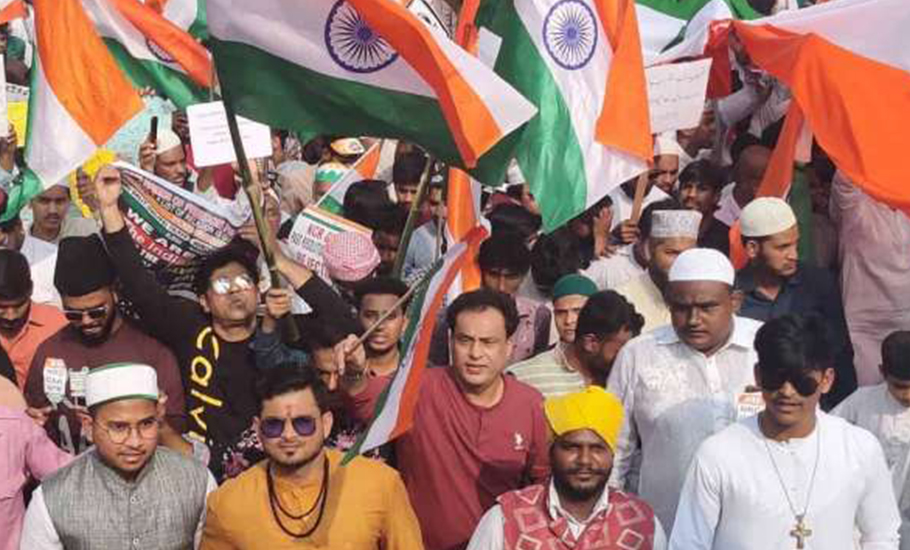
“When you equate a certain community with vermin or insects, then you are not hesitant to stomp on them. Hate speeches direct your unjustified and excessive anger towards a community. This has started happening in India now. Friends have become enemies. It is only going to increase,” says Choudary.
This, he warns, is just the beginning.

